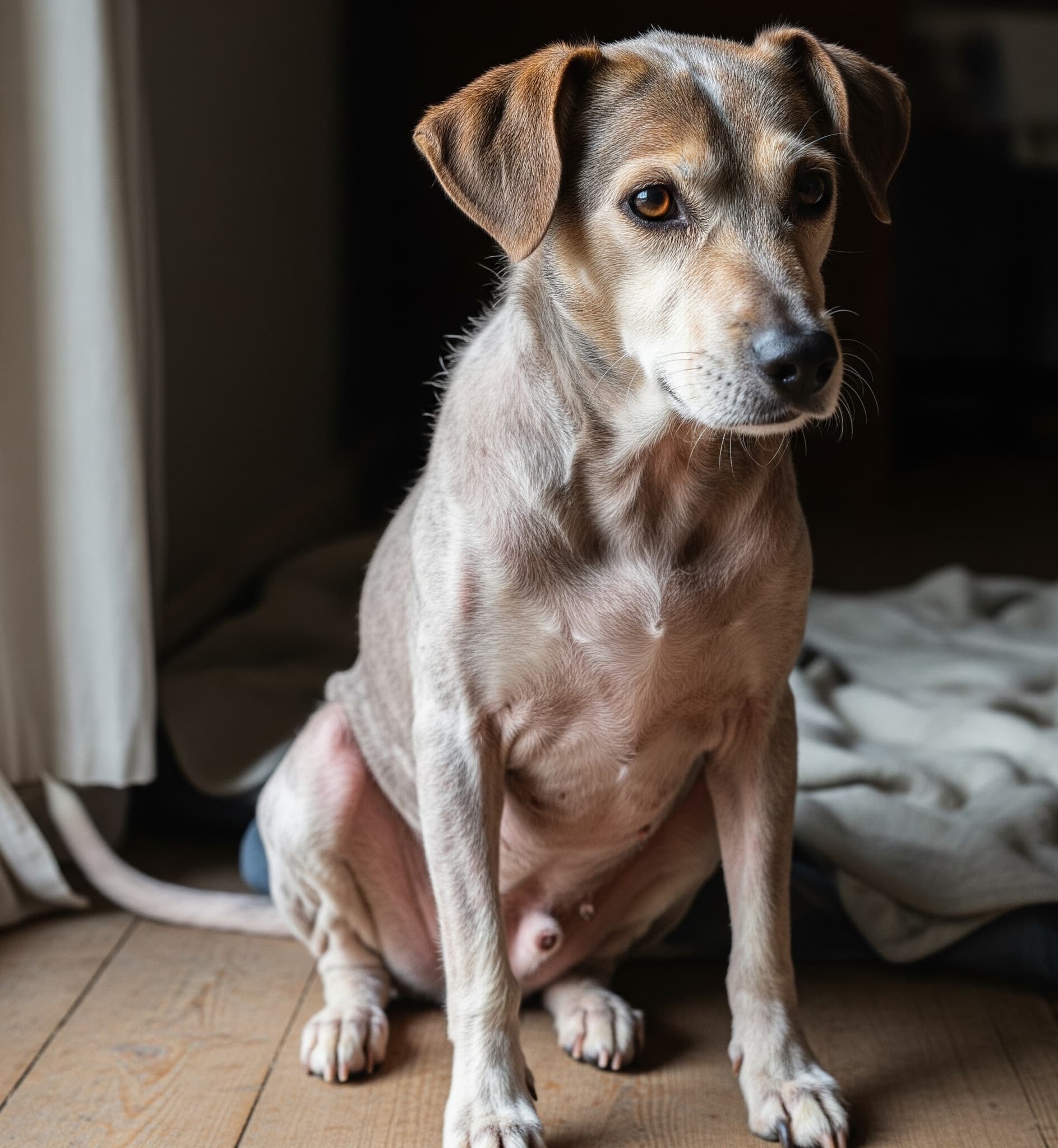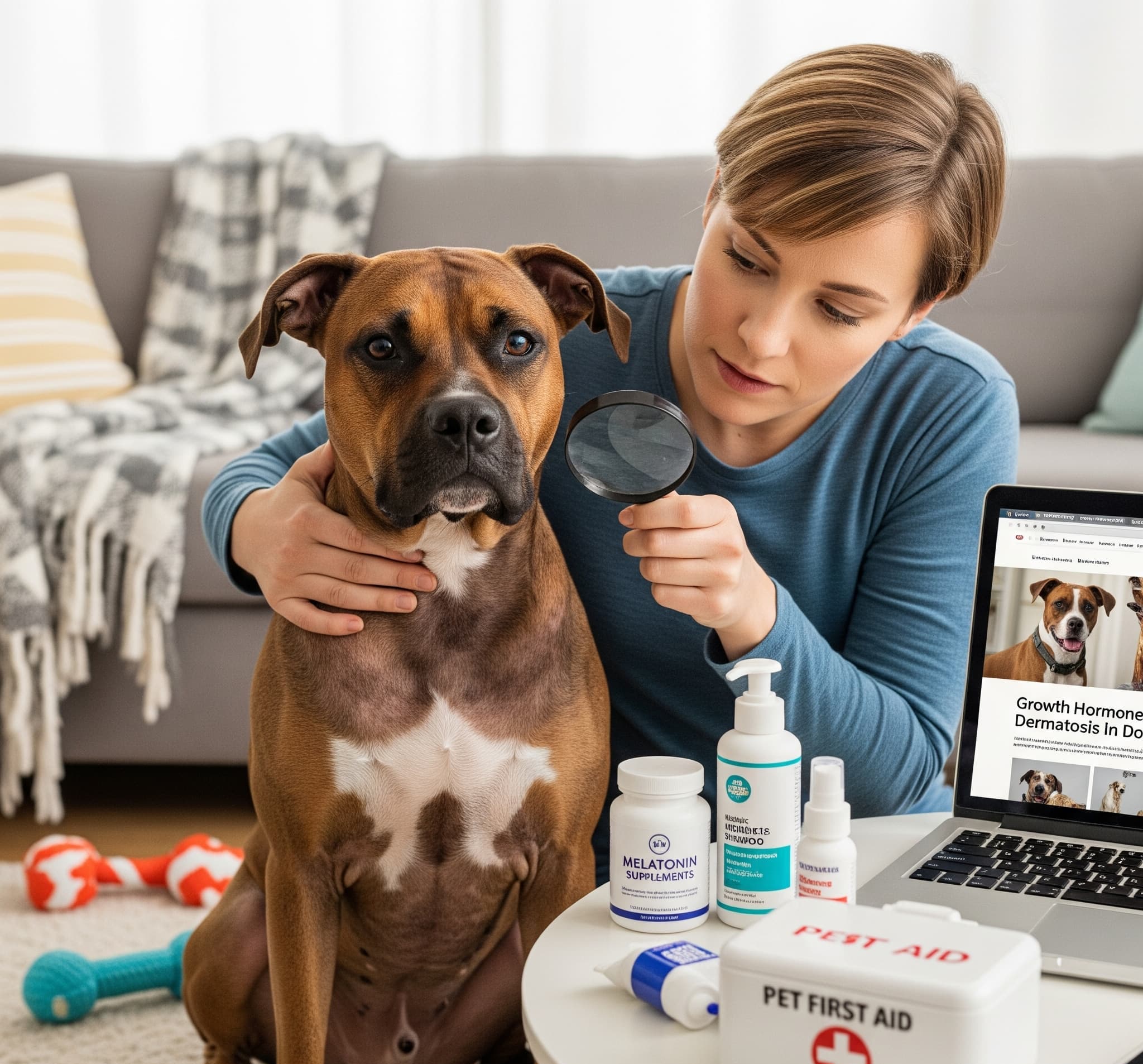Melatonin vs. Other Treatments: What Works for Dog Hair Loss?
Could melatonin be the solution to your dog’s hair loss? Consider other options and see how they stack up against melatonin. Read on for expert advice.
Introduction
For a dog owner, the sight of a dog losing fur is heartbreaking. Wondering if a hormone booster like melatonin could provide an answer, or does other treatment take the trophy? Pet parents, don’t stress—it’s natural to be confused. This guide allows you to compare melatonin to other options available for dog fur loss, making it simple for you to choose what’s most suitable for your furry friend. Let’s begin!
Mostly, we will cover:
- Understanding Canine Hair Loss and its Causes
- How does Melatonin aid treatment for dog hair loss?
- Other Common Remedies for Canine Alopecia
- Melatonin or Alternatives: What is the Best Approach?
- Treating dog hair loss: Frequently Asked Questions
Understanding Canine Hair Loss and its Causes
A question that comes to mind is: What is the reason behind a dog losing its fur? Alopecia is mostly observed in the diseases and disorders of the skin and can present as patchy bald spots, narrowing of hair, and skin that is darkened. It is often associated with seasonal flank alopecia and usually occurs in the fall or spring, especially in breeds like Boxers, Bulldogs, or Schnauzers.
Stress, allergies, and hormonal nutritive system disorders (like underactive thyroid) diseases can all contribute to hair loss.
Many people have commented regarding hair loss and seasonal changes, specifically a lack of melatonin production. It is important to highlight that not all forms of alopecia are identical, and there is a need to understand the reason behind it. That is possible with a veterinary check-up, so be sure to see your vet.
How does Melatonin aid treatment for dog hair loss?
A dog’s melatonin functions like a hormone that marks the changes of the season, thus controlling them. Melatonin is essentially a biological cue for dogs to grow hair when the amount of daylight is less. Therefore, a drop in melatonin production can stall hair follicles in a certain stage of development, especially in the flank area, leading to bald patches.
Administering melatonin supplements can promote hair regrowth. Research indicates that melatonin helps 50–75% of dogs with seasonal flank alopecia to regrow hair within 2 to 3 months. It is safe, inexpensive, and recommended by veterinarians for conditions like Alopecia X and pattern baldness. Interested in seeing results? You can watch the remarkable improvement of a dog’s coat with melatonin on YouTube.
Other Common Treatments for Canine Alopecia
Besides melatonin, there are various alternatives. Here are three of the most popular:
Light Therapy: Since melatonin production ties to sunlight, dogs can benefit from being exposed to natural or even artificial UV light. For some dogs, daily walks or special light lamps made for pets have proven beneficial.
Hormonal Treatments: For alopecia of hormonal origin, vets may prescribe drugs like trilostane for Cushing’s disease or levothyroxine for hypothyroidism. Although these medications do address the problem, they may also cause lethargy as a side effect.
Topical Treatments and Shampoos: Skin-calming and hair growth-sustaining medicated shampoos like benzoyl peroxide and omega-3 are great for allergic conditions, but are ineffective in case of hormonal baldness.
Every dog has a different condition, and every method has advantages and disadvantages. Getting a veterinarian’s diagnosis is crucial in making the right decision.
Melatonin or Alternatives: What is the Best Approach?
So, what about melatonin? Here’s a snapshot:
Effectiveness: Light therapy is helpful for seasonal flank alopecia, but it’s not very practical. Melatonin is effective with a 50-75% success rate and is superior to light therapy. Hypothyroid hormonal therapies are effective but not for seasonal cases. Chronic gait alopecia is a hit or miss for shampoos, but works better for skin health than for regrowth.
Safety: Melatonin’s low-risk profile and gentle side effects like subtle stomach issues make it an easy option. Hormonal treatments do carry risks like weight gain and liver problems. Light therapy is safe but requires consistent use. Shampoos pose a risk to sensitive skin, but are safe for general use.
Cost and Ease: Light therapy lamps priced from $50 to $200, and veterinary visits plus $30-100 for hormonal treatments make them quite costly. Melatonin is priced reasonably around $10-20/month and easy to dispense. Shampoos are effective but pricey, needing to be used frequently.
Best For: Melatonin works best for those with seasonal or idiopathic alopecia. Hormonal treatments are better for dogs with diagnosed endocrine issues, light therapy is effective in mild cases, while shampoos are best for allergic-related hair loss.
There’s no single best option, so consulting your vet is best for tailoring the most fitting approach for your furry friend.
Treating dog hair loss: Frequently Asked Questions
How fast does melatonin work?
In 1 to 3 months, improvements will be noticed. Hair regrowth will happen with time, be patient.
Are other treatments safer than melatonin?
Compared to other treatments, melatonin is one of the safest options available. While some shampoos and light therapy have minimal side effects, the with the use of hormonal drugs poses other greater risks.
Can I combine treatments?
In some cases. Light therapy and omega 3s work well with melatonin. Always consult with your vet first.
What if my dog’s hair loss isn’t seasonal?
Allergies and thyroid problems have different treatments. A vet can run tests to find out.
Where do I get safe melatonin?
Do not use human melatonin. It might contain xylitol, which is toxic to dogs. Vet approved brands like K9 Select are safe to use.
Conclusion
With options available, loss of hair in dogs does not have to be as troublesome as it seems. With melatonin, many pups can be treated for seasonal flank alopecia and it can be a safe inexpensive solution for many. It is often the best option when compared to light therapy, hormonal drugs, or shampoos. Every dog is different which is why a vet’s assessment is always the best approach.
Want to assist in enhancing your dog’s coat? Consult your veterinary doctor melatonin and other options today. Interested in other tips about pets? Join our newsletter! In case this guide helps, do share with other dog lovers to potentially save their fur.




Post Comment